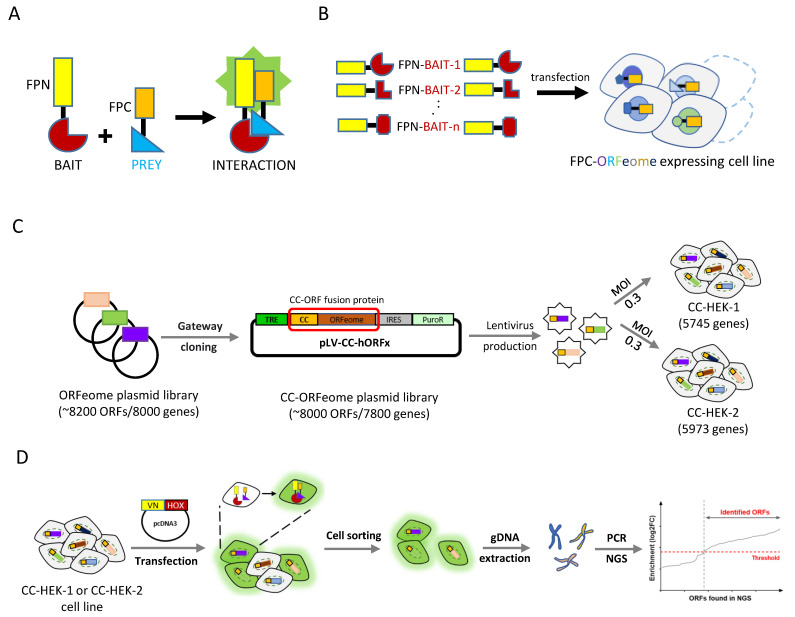Figure 1.
Principle of the protein complementation assay (PCA) and its applications in large-scale interaction screens. (A) Application of fluorescence-based PCAs to reveal interactions between two candidate partners. The N (FPN)- or C (FPC)-terminal fragment of the fluorescent protein (FP) is fused to one of the two putative interaction partners (bait and prey proteins). The interaction between the bait and the prey proteins allows the reconstitution of the fluorescent protein and the emission of fluorescent signals upon excitation. This principle of complementation has also been developed with enzymes for large-scale interaction screens (see for example [5]). (B) Application of PCA-based strategies to large-scale interaction screens in living cells. The cell line PCA-based screening strategy (Cell-PCA) relies on the use of cell lines established with an inserted FPC-fusion library (D). These cell lines can be used multiple times in screening for interacting partners of different FPN-fusion bait proteins introduced by transfection. (C,D) Experimental procedure for the Cell-PCA-based screen. (C) A pool of ~ 8200 human ORFs derived from the hORFeome v3.1 is cloned en masse with Gateway® LR reaction into the lentiviral vector pLV-CC (Figure S1), subsequently generating the CC-ORFeome plasmid library (pLV-CC-hORFs). The final expression plasmid library (~ 8000 ORFs) is used to produce lentiviruses and to infect two different batches of HEK293T cells to generate two different cell lines (CC-HEK-1 and CC-HEK-2). (D) Each CC-HEK cell line can be transfected with the VN-HOX-encoding plasmid. Any interaction with a CC-ORF leads to fluorescent cells that are collected using flow cytometry. Genomic DNA (gDNA) is extracted from the fluorescent sorted cells, and interacting ORFs are identified through a next generation sequencing (NGS)-dedicated approach. CC: C-terminal fragment of mCerulean (residues 155–238). VN: N-terminal fragment of mVenus (residues 1–172). MOI: multiplicity of infection.

